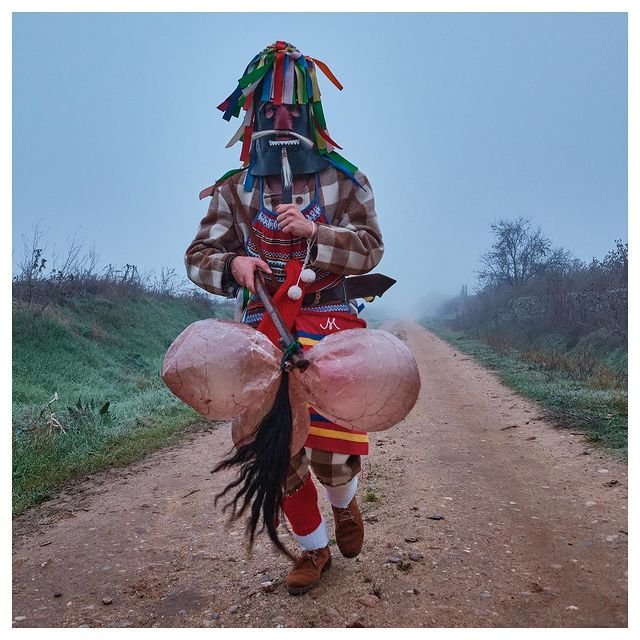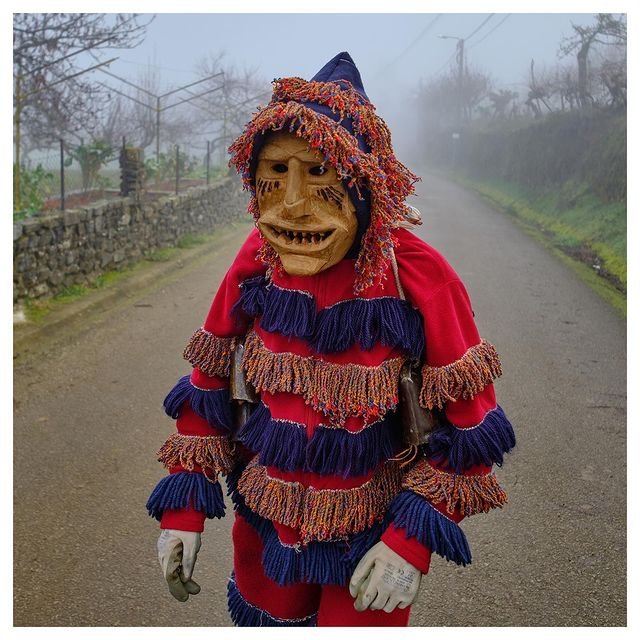Roberto de la Torre
Roberto de la Torre’s intentions are to question the human meaning of growth and evolution. Are we getting closer to our better selves? or getting far distant from our truest nature and intellect? Is it god that has built us, or it's us that has built the idea of god? He is determined to know the power of collective beliefs and ancestral knowing.
What's spirituality for you?
For me, spirituality is the set of ways in which we connect and communicate with the sacred. The ancient and necessary attempt of human beings to communicate with the gods and the supernatural and that which escapes human rational understanding.
What makes you want to photograph and speculate the topic you doing?
I like the relationship that man has with the sacred. The fear, respect and fascination that human beings have with the supernatural. The numinous is described by the German theologian Rudolf Otto (1869-1937) in his work "The Idea of the holy" as something mysterious, terrifying and fascinating. It is a concept that predominates as a basis of the argument in all my photographic work.
What have you understood about the dramatic identities associated with mythological sacredness
These identities, with their costumes and masks, transcend beyond the person underneath, these are not costumes. They are sacred characters who are celebrating cults of an ancient religion, lost in the origins of humanity. Although the vast majority of people only appreciate colourful festive costumes I believe they are mythological beings as they connect us with our most ancestral past.
Masks and theatrical attire are something of a common theme and subject for you, why?
Masked rituals are ceremonies that involve the use of masks and costumes to represent particular characters or spirits. These rituals are often of great importance in some cultures and may be used to commemorate special events or celebrations, to pass on stories or myths, or to invoke supernatural forces. Masked rituals may be performed by individuals or groups and may include elements such as dancing, music and other symbolic elements. In some cases, masked rituals may have religious or spiritual significance, while in other cases they may simply be a form of entertainment. The human being needs to transform himself in order to come into contact with the sacred, he needs elements of power, masks, special clothes, natural attributes and animistic elements. These characters represent, in a way, the intermediaries between man and deity. They are communicators like shamans or priests of the Christian cult. Through ritual, they come into contact and obtain answers by interpreting the sacred symbology, which is not within the reach of everyone, in the magical journey through a ritual they communicate with the sacred.
It is evident that such dramatic identities have mysteries and stories associated with them. Is this a magical journey? Tell us how it all started.
I began to see these masked figures in this way when I interpreted, after many years of study, that they were the remains of cults and rituals of very ancient religions. I studied the history of religions and anthropology in order to draw my own conclusions, comparative studies and fieldwork. In a way it has been a journey for me, to be able to immerse myself in this culture and understand the need for contact with the sacred has been very enriching.
What is your relationship with mysticism, tribal and ritualistic settings? You have captured the subjects with festive emotions at times, almost like a snapshot before a celebration. Is it intentional? How do you go about the time, place, and people for your photographs?
I always try to photograph the masked figures within their ritual cycle. These representations are made at very specific times of the year, the solstices or equinoxes. The changes in cycle or season are determining factors in their existence. The natural environment in which they are performed is also very important. In this way, space and time are part of the essence of the photographic capture. I could go at another time of the year and take these photographs, I could ask people to wear the costume and mask but this would be like taking a photograph of Mickey Mouse in a theme park, without the magical, spatial and temporal character. I take the photographs on the sacred day where they appear, before or after the ritual so as not to interfere with the time it takes me to take the picture.
“The human being needs to transform himself in order to come into contact with the sacred, he needs elements of power, masks, special clothes, natural attributes and animistic elements. These characters represent, in a way, the intermediaries between man and the deity”
It seems you have an interest in indigenous life. Is it connected to your city Vigo in Spain? How was life growing up?
Vigo is a cosmopolitan and modern city but close to rural areas where these masked rituals are still alive. They are more typical of villages and rural environments where people are still linked to land and agriculture. I spent my childhood outside Vigo, in one of these rural villages, where I could feel the importance of popular beliefs and traditional religion on the land and the natural environment.
Totems, folklore, and African significance are also somehow visible in your subjects of focus. Could you tell us one of the best memories so far that made you want to continue and explore your endeavour?
The best memory is having met the people who wear these costumes, and their unconditional energy about the masked ancestral traditions, which they inherit from parents to children and do not allow to be lost in memory. This way of understanding life around ritual motivates me and fills me with energy to continue working, this culture deserves all my effort.
Tell us about your thoughts on photography as a tool to capture life and moments. What else do you photograph? What makes you photograph something that you do?
Photography is the perfect tool to capture emotions, it has the ability to record intangible heritage. With the right interpretation and discourse I can build my work MICROCOSMOS, all my photographic work revolves around the relationship of the human being with the sacred that I mentioned before, through rituals and the mythology that underlies folklore. I also photograph rituals linked to the worship of the human being with stones, fire and water.
If you have (assuming must have) witnessed shamanic rituals, Please tell us something that you’d like people to remember or acknowledge more.
I have witnessed rituals where through the sound of drums and percussion instruments people have reached altered states of consciousness. I suppose this is the shaman's mental vehicle to get in touch with the sacred, I would like to point out that the shaman needs to transform himself to cross that line between the sacred and the profane, the ritual is the vehicle with its colours, masks and special costumes for the mystical journey.
What are your intentions with your work? Are you seeking something?
My work MICROCOSMOS seeks a reflection in the spectator, I like my work to generate questions in their mind, to awaken curiosity for this kind of ritual. I like people to reconnect with the ancestral origin of the sacred in humanity. Did god create man? or was it the man who created god? What is the point of communicating with the sacred? Does this ancient wisdom hide the answers we need? Why has our society turned its back on ancient spirituality? Perhaps what I am looking for are not answers, but questions.
Last but not least, Where are you heading next? What are you looking forward to doing now?
MICROCOSMOS is an open work that grows every day. I keep researching, studying and discovering new rituals. I build bridges of ideas and have conclusions about the common origin of these rituals. I would like to expand my work to the European and then to the global level. I am sure that humanity has a common origin in its ancestral beliefs, maybe if we manage to make them visible and understand them we can get along better with each other and be better human beings.
interview JAGRATI MAHAVER
What to read next





















